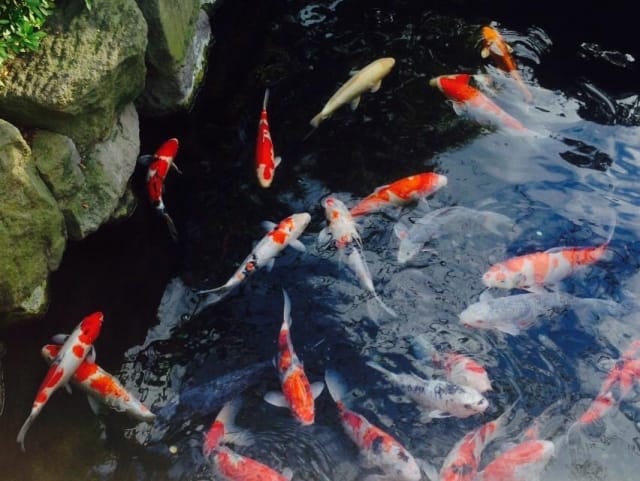Where can we see koi fish in Tokyo's drainage canals?
Discover the best spots to see koi fish in Tokyo! From Asakusa Shrine to hidden canals, explore these vibrant habitats for a unique experience.

Where Can We See Koi Fish in Tokyo's Drainage Canals?
If you’re hoping to spot koi fish swimming freely in Tokyo’s drainage canals, I have to be honest: it’s pretty rare. Unlike some other parts of Japan, Tokyo’s urban waterways aren’t really koi hangouts. The city is so built-up that natural koi habitats are scarce, and what you do see are mostly in managed ponds or gardens.
“So, where is the best place to see koi fish in Japan then?”
For authentic, wild koi viewing, Kyoto is the top spot. The Kamo River (Kamo-gawa), which runs right through the city and is easily accessible from Kyoto Station, has wild koi swimming around. It’s one of those peaceful spots where locals and visitors alike enjoy the natural scenery and the fish darting beneath the surface. It feels like a little escape from the busy city life.
“Are there any koi you can see in Tokyo at all?”
Yes! While wild koi in drainage canals are uncommon, you can almost always find koi in shrine or temple ponds and Japanese gardens around Tokyo. For example, the Asakusa Shrine area often has koi in their ponds, and famous gardens like Rikugien and Koishikawa Korakuen have beautiful koi ponds that locals enjoy visiting. In these places, koi aren’t wild but are well cared for and part of the serene garden experience.
“Can tourists walk along drainage canals to try and spot koi in Tokyo?”
Technically, you can explore some canals, but it’s unlikely you’ll spot koi there. Tokyo’s drainage canals are mostly functional urban waterways, not designed as natural habitats. Japanese people don’t usually fish or look for koi in these canals because the environment isn’t suitable. Instead, they enjoy koi as part of traditional garden aesthetics or shrine settings.
“Are there any cultural reasons why koi are kept in gardens or shrines?”
Definitely. Koi fish symbolize perseverance, strength, and good fortune in Japanese culture. That’s why you’ll often see them in carefully maintained garden ponds or near shrines—places meant for tranquility and reflection. Locals enjoy watching koi swim slowly around, which adds to the peaceful atmosphere. It’s less about wild fish watching and more about appreciating the symbolism and beauty within a controlled, quiet space.
“If I want to see koi fish like a local, what do you recommend?”
Skip hunting down koi in drainage canals and instead spend time in a traditional garden or shrine pond. For example, I love visiting Rikugien Garden (entrance fee around ¥300 ≈ $2.20 USD), where koi swim alongside seasonal flowers and historic landscaping. It’s a chance to slow down, enjoy nature’s details, and experience how Japanese people find calm in everyday life. Plus, you might spot a few older locals quietly feeding the fish or meditating nearby—that’s the real vibe.
So while Tokyo’s drainage canals won’t offer you koi fish encounters, the city’s gardens and shrines provide a glimpse of how koi are truly appreciated in Japanese daily life. It’s a subtle, peaceful experience rather than a wildlife adventure—one of those quiet cultural moments you might not expect but end up loving.



Comments ()